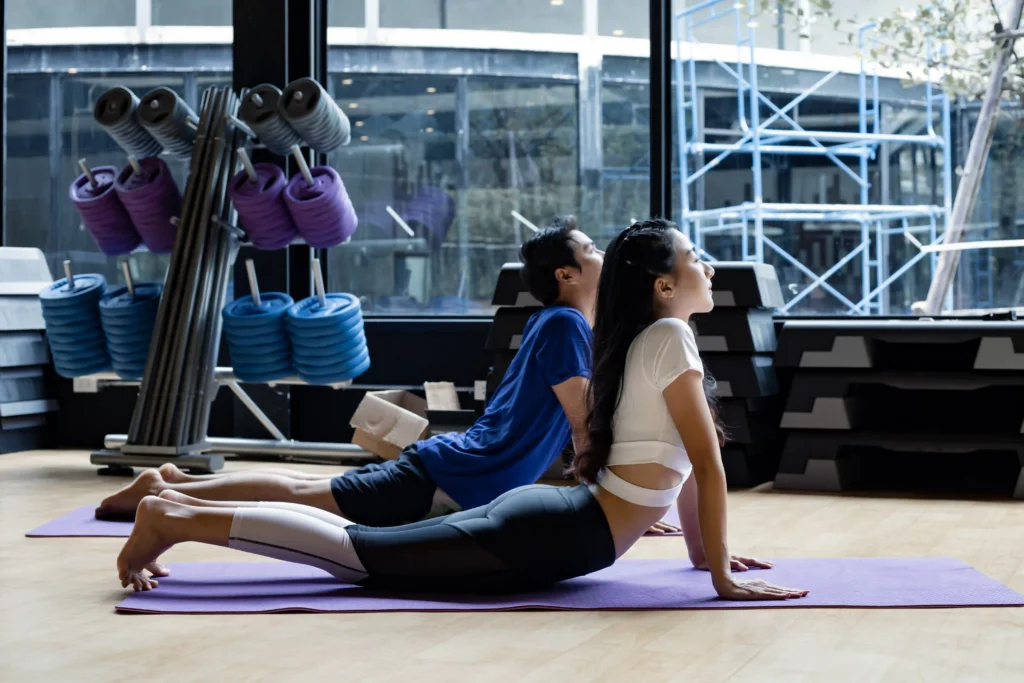
Table of Contents
ToggleThe McKenzie Method for neck pain, formally known as Mechanical Diagnosis and Therapy (MDT), is a highly regarded approach in the world of physical therapy and spinal care. As a spine surgeon with over 25 years of experience, I’ve seen firsthand how this method empowers patients to manage their pain effectively.
It is not just a series of exercises but a comprehensive strategy that combines precise diagnostics, personalized exercises, and education. Whether you’re experiencing chronic neck pain or an acute flare-up, the McKenzie Method offers a pathway to relief by addressing the underlying mechanical dysfunctions that cause your symptoms.

At its core, the McKenzie Method is designed to identify and treat mechanical issues in the spine. It begins with a thorough assessment, where patients perform specific movements under professional guidance.
These movements help pinpoint the source of pain and determine a “directional preference,” meaning the spinal motion that alleviates pain. For example, many patients find relief by gently extending their neck backward.
One of the standout aspects of the McKenzie Method is its focus on centralization, which refers to moving pain from peripheral areas, like the arms or shoulders, back toward the spine. Centralization is a critical indicator that the therapy is working.
By identifying this response, we can target exercises that not only reduce pain but also prevent it from returning. Unlike other therapies, the McKenzie Method encourages self-management, giving patients the tools to maintain their spinal health long after their therapy sessions end.
In my practice at Long Island Neuroscience Specialists, we integrate the McKenzie Method with our advanced surgical and non-surgical treatments. For many of my patients, it serves as a bridge to recovery, especially for those looking to avoid invasive procedures.
Having worked with thousands of patients, I can confidently say that the McKenzie Method stands out for its simplicity and effectiveness. Unlike traditional physical therapy, which often focuses on generalized strengthening or passive modalities like heat or ultrasound, the McKenzie Method hones in on the root cause of the pain.
By targeting mechanical dysfunctions, it provides lasting relief rather than temporary fixes. Another unique feature is the emphasis on patient empowerment.
Patients are actively involved in their recovery process. This contrasts with manual therapies or medication-based approaches, where the patient may remain passive.
Furthermore, the method is non-invasive, cost-effective, and easily adaptable to individual needs. In addition to these benefits, the McKenzie Method has been shown to outperform conventional treatments for certain conditions.
For example, patients with moderate-to-severe neck pain often experience faster and more significant relief with this method compared to stretching or strengthening exercises. It’s this level of precision that makes it such a valuable tool in my practice.
Neck pain can have numerous causes, but the McKenzie Method is particularly effective for addressing mechanical issues. These include herniated discs, postural imbalances, and soft tissue dysfunctions such as muscle tightness or scar tissue.
Many of my patients come in with pain that radiates down their arms—a hallmark of nerve compression in the cervical spine. The McKenzie Method’s focus on centralization makes it especially effective for treating these symptoms.
Another common cause of neck pain is poor posture, particularly in today’s digital age. Forward head posture, often exacerbated by prolonged screen time, places undue stress on the cervical spine.
By teaching patients how to realign their posture and strengthen supporting muscles, the McKenzie Method not only alleviates pain but also addresses its root causes. Lastly, the method is highly effective for managing chronic conditions like degenerative disc disease or sacroiliac joint dysfunction.
By incorporating gentle, targeted exercises, it helps patients regain mobility and function without the need for invasive treatments.

Over the years, I’ve found that the McKenzie Method works best for individuals with moderate-to-severe neck pain. These are often patients who score a 5 or higher on a 10-point pain scale and are looking for a non-invasive way to manage their symptoms.
It’s also highly effective for those experiencing radicular pain, where the discomfort radiates into the arms or shoulders. This method is ideal for individuals who want to take an active role in their recovery.
Unlike treatments that rely heavily on professional intervention, the McKenzie Method teaches patients how to manage their symptoms independently. It’s a particularly good fit for those who value long-term prevention over short-term relief.
Patients recovering from surgery or dealing with chronic conditions like degenerative disc disease can also benefit significantly. The exercises help restore mobility, reduce stiffness, and strengthen the spine, making it a versatile tool in the broader spectrum of spinal care.
The McKenzie Method offers a range of exercises tailored to individual needs. One of the foundational movements is head retraction in sitting, where patients gently pull their head backward while maintaining a neutral spine.
This exercise is perfect for counteracting the effects of poor posture and can be done throughout the day.
Another effective exercise is neck extension in sitting, which involves tilting the head backward while keeping the chin tucked.
This movement helps centralize pain and is particularly useful for patients with radiating symptoms. For those who find these movements too painful, head retraction in lying provides a gravity-free alternative, making it easier to perform.
More advanced exercises include side bending of the neck and neck rotation, which improve flexibility and address stiffness. For patients dealing with forward head posture, neck flexion in sitting helps restore alignment.
Each of these exercises is performed in a controlled manner, with the aim of progressively reducing pain and improving mobility. Read more here.
One of the most empowering aspects of the McKenzie Method is its emphasis on self-assessment. This process begins with observing the location, intensity, and type of pain.
Patients are encouraged to note whether their pain is constant or intermittent and whether it changes in response to specific movements or positions. During a self-assessment, patients perform repeated movements, such as neck extensions or flexions, to identify a directional preference.
For instance, if tilting the head backward reduces pain, this movement becomes the basis for their exercise routine. It’s also important to track whether the pain centralizes, as this indicates the therapy’s effectiveness.
While self-assessment is a valuable tool, I always recommend consulting a certified McKenzie practitioner for initial guidance. This ensures that patients are performing the movements correctly and reduces the risk of injury.

While the McKenzie Method is generally safe, there are a few precautions to keep in mind. First, patients should avoid exercises that exacerbate their symptoms or cause new pain.
It’s essential to perform each movement in a controlled, deliberate manner and to stop if discomfort arises. For those with complex conditions, such as significant nerve compression or severe disc herniation, professional guidance is crucial.
Certified practitioners can tailor the exercises to suit individual needs, ensuring safety and effectiveness. Patients recovering from surgery should also consult their surgeon before starting the McKenzie Method.
Finally, it’s important to be patient. Recovery takes time, and overexertion can do more harm than good.
By following these precautions, patients can maximize the benefits of the McKenzie Method while minimizing risks.
One of the most compelling advantages of the McKenzie Method is its ability to prevent recurring neck pain. Unlike treatments that only address symptoms, this method targets the root cause of pain, equipping patients with strategies to avoid future issues.
By consistently performing the prescribed exercises, patients maintain proper spinal alignment and strengthen their neck muscles, reducing the likelihood of mechanical dysfunctions. Another preventive benefit is the method’s focus on posture correction.
Poor posture, whether from prolonged screen time or improper ergonomics, is a leading cause of neck pain. Through the McKenzie Method, patients learn to adopt and sustain supported postures, alleviating strain on the cervical spine.
This proactive approach ensures that minor discomforts don’t escalate into chronic pain. Many of my patients also find that regular McKenzie exercises serve as an early intervention tool.
If they notice stiffness or mild discomfort, performing a few targeted movements can prevent the pain from worsening. This empowers individuals to take control of their spinal health, fostering long-term well-being. Read more here.
The timeline for results varies depending on the severity of the condition and the patient’s commitment to the program. In cases of acute neck pain, many patients report noticeable improvements within a few days.
For example, centralization of pain can occur almost immediately when the correct directional preference is identified. For moderate-to-severe cases, the process may take longer, often requiring consistent practice over 2–3 weeks.
During this time, patients typically experience reduced pain intensity, improved mobility, and fewer radiating symptoms. In my experience, patients who diligently follow their exercise regimen see the best outcomes.
Chronic conditions or long-standing postural issues may take 4–6 weeks or more to show significant improvement. It’s important to set realistic expectations and understand that recovery is a gradual process.
Regular check-ins with a certified practitioner can help track progress and make necessary adjustments to the treatment plan.

While the McKenzie Method is designed to empower patients, the guidance of a certified practitioner is invaluable, especially in the initial stages. Certified practitioners have undergone extensive training to accurately assess spinal issues and prescribe exercises tailored to individual needs.
They can also help identify directional preference and ensure that movements are performed safely and effectively. For complex cases, such as severe nerve compression or post-surgical recovery, professional oversight is essential.
Practitioners can modify exercises to accommodate specific conditions and prevent further injury. Additionally, they provide ongoing support, helping patients stay motivated and committed to their recovery journey.
If you’re new to the McKenzie Method, I highly recommend scheduling an initial consultation with a certified practitioner. This not only sets the foundation for success but also ensures that you’re using the method to its fullest potential.
While the McKenzie Method is effective for many individuals, it’s not suitable for everyone. Certain conditions, such as fractures, infections, or tumors, require medical intervention rather than exercise-based therapy.
Patients with these issues should consult a spine specialist before attempting the McKenzie Method.
Additionally, the method may not be effective for pain that doesn’t stem from mechanical dysfunctions.
For example, neck pain caused by systemic diseases or vascular issues may not respond to this approach. In such cases, alternative treatments may be more appropriate.
It’s also worth noting that the success of the McKenzie Method depends heavily on patient compliance. Those who struggle to perform the exercises consistently or correctly may see limited results.
This is why professional guidance is so important, particularly for beginners or those with complex conditions.
If you’re interested in exploring the McKenzie Method further, there are numerous resources available to help you get started. The McKenzie Institute offers comprehensive training programs for healthcare professionals and provides a directory of certified practitioners worldwide.
This is a great place to find qualified experts in your area. Books authored by Robin McKenzie, such as Treat Your Own Neck, are excellent self-help guides that explain the principles of the method in detail.
These resources include step-by-step instructions, illustrations, and tips for integrating the exercises into your daily routine. For tech-savvy individuals, mobile apps and online tutorials can provide additional support.
Many apps offer video demonstrations, progress tracking, and reminders to ensure consistency. These tools are particularly helpful for patients who prefer a more interactive approach.
Finally, local physical therapy clinics often offer workshops or one-on-one sessions focused on the McKenzie Method. At Long Island Neuroscience Specialists, we regularly incorporate this method into our comprehensive care plans, ensuring that our patients receive the highest standard of care.
The McKenzie Method is a powerful tool for managing and preventing neck pain, offering a non-invasive, evidence-based approach that empowers patients to take control of their spinal health. Through targeted exercises, self-assessment, and patient education, this method addresses the root causes of pain, providing lasting relief and reducing the risk of recurrence.
At Long Island Neuroscience Specialists, we bring over 25 years of experience to every patient interaction, combining cutting-edge techniques with personalized care. Whether you’re dealing with chronic pain, recovering from surgery, or simply looking to improve your quality of life, the McKenzie Method can be an integral part of your journey.
If you’re ready to take the first step toward a pain-free life, we’re here to help. Schedule a consultation today and discover how the McKenzie Method can transform your approach to neck pain.
GET IN TOUCH +
285 Sills Road
Building 5-6, Suite E
East Patchogue, NY 11772
(631) 475-5511
184 N. Belle Mead Road
East Setauket, NY 11733
(631) 675-6226
GET IN TOUCH +
285 Sills Road
Building 5-6, Suite E
East Patchogue, NY 11772
(631) 475-5511
184 N. Belle Mead Road
East Setauket, NY 11733
(631) 675-6226
SUBSCRIBE TO OUR NEWSLETTER +
Send us a Google review. Click this link and let us know how we did!
Review us on Yelp too.